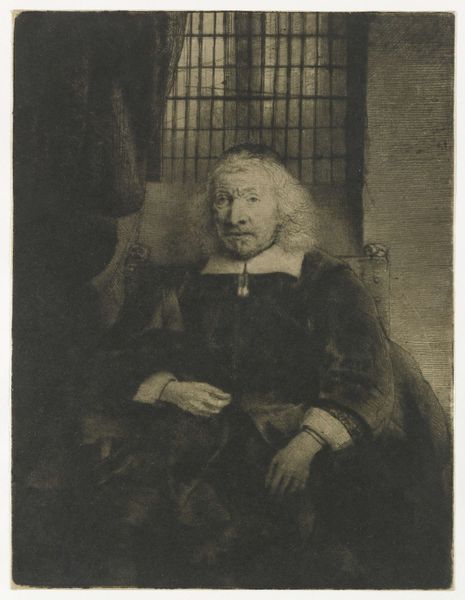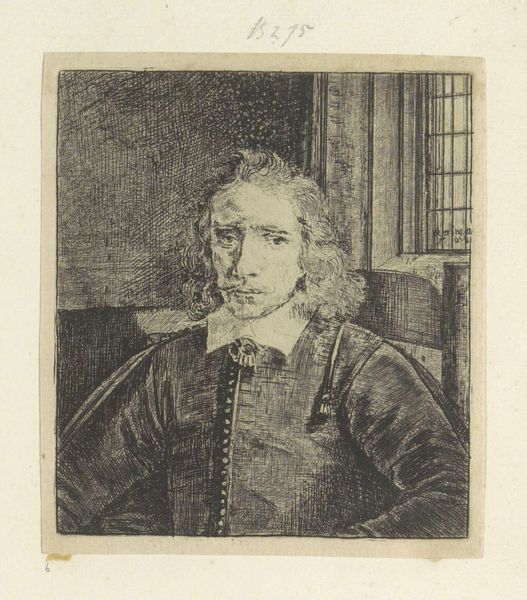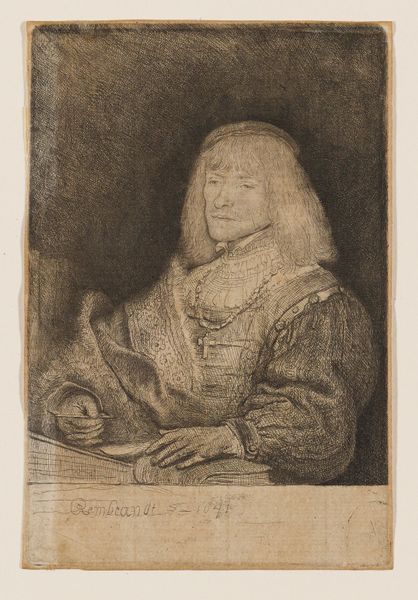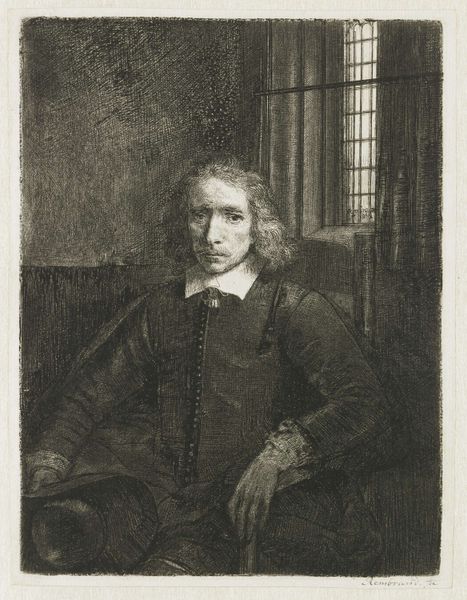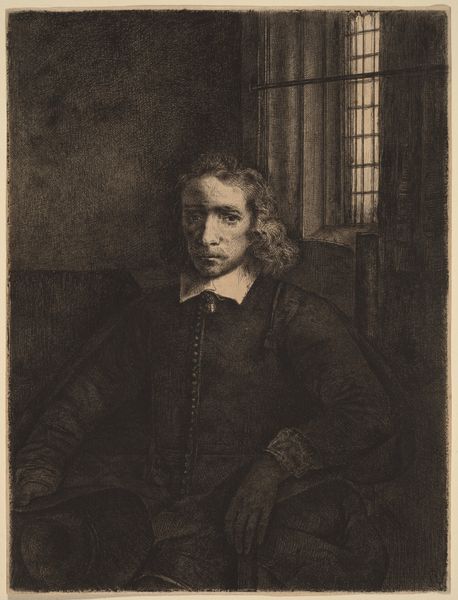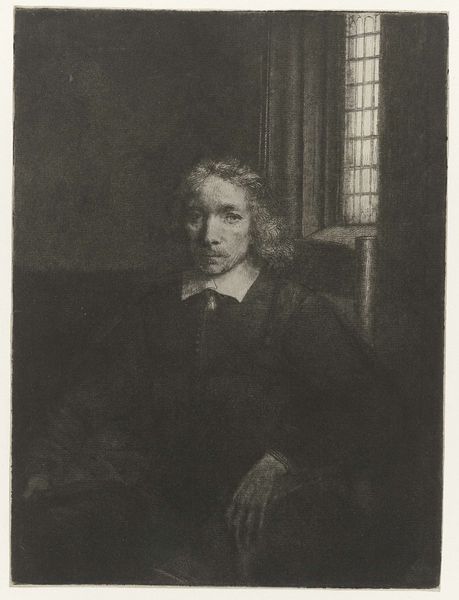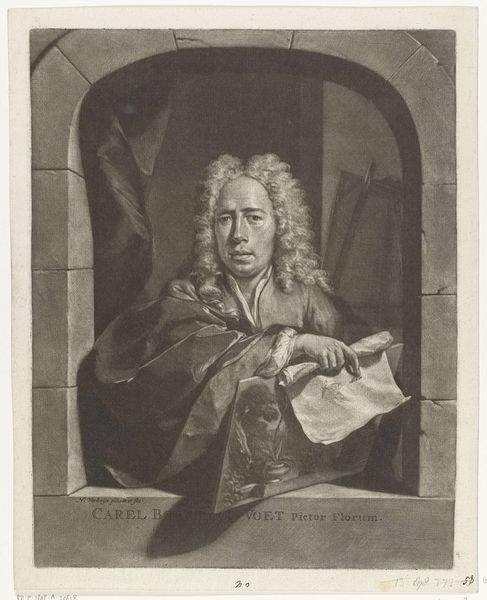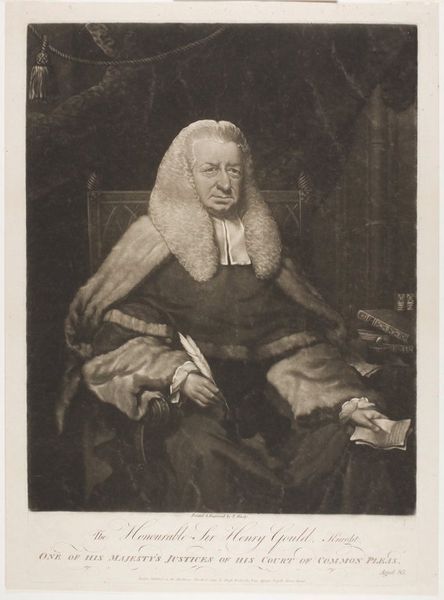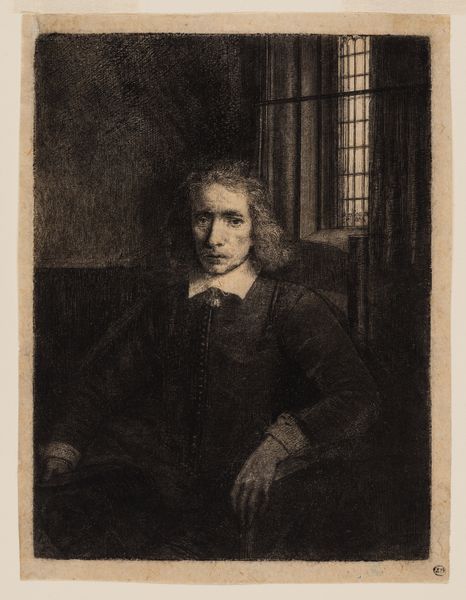
drawing, print, etching
#
portrait
#
drawing
#
baroque
#
dutch-golden-age
# print
#
etching
#
portrait reference
#
men
#
portrait drawing
Dimensions: sheet: 7 13/16 x 5 15/16 in. (19.8 x 15.1 cm)
Copyright: Public Domain
Editor: So, here we have Rembrandt van Rijn's "Thomas Haaringh (Old Haaringh)," an etching dating from around 1650 to 1660. There’s something almost melancholic about this portrait; the man's expression, the muted tones... it's quite affecting. How do you interpret this work? Curator: For me, it resonates powerfully with the societal structures of the Dutch Golden Age, a period marked by both unprecedented prosperity and stark social stratification. Look at how Rembrandt positions Haaringh – seated, yet the window behind him has bars; what freedoms does he possess and what might be restricted? Editor: That's a really interesting point. I hadn't considered the window as a kind of barrier. Does this have anything to do with Haaringh's profession? Curator: Precisely. We need to contextualize Haaringh’s role – a wealthy auctioneer but maybe complicit in maintaining certain systems and inequities through art. The subtle shading and Rembrandt’s focus on Haaringh’s aging face invite a deep reflection on the power dynamics inherent in collecting and selling art during that period. Consider who profits from this commerce. Editor: I see. So, you're saying that Rembrandt isn't just painting a portrait; he's offering a commentary on the ethics of wealth and art? Curator: Exactly! It provokes crucial questions about the art world’s gatekeepers – their roles and their social responsibility. Also, it makes me consider representation - whose images and voices are amplified and whose are relegated to the shadows. The very act of memorializing Haaringh underscores those disparities. Editor: Wow, that adds so many layers! I initially saw it as just a sad portrait, but now it seems charged with social and historical significance. Curator: And that’s the beauty of art history! It challenges us to see beyond the surface and engage with complex power structures embedded within the artwork. Editor: Thanks, this has really changed how I look at these older works. Curator: The exchange, in turn, underscores for me the importance of art history continually evolving, of responding to different contexts.
Comments
No comments
Be the first to comment and join the conversation on the ultimate creative platform.
